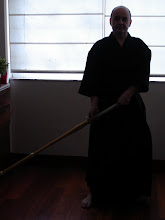During the 16th century, it could be said that the Spaniards truly ruled the waves. Once a backwater feudal kingdom, Spain asserted its grand ambitions throughout the age of discovery, acquiring vast domains across 4 continents and set its trade ships on sail across oceans, carrying huge quantities of gold, silk, and spices. However, it’s vast empire and riches attracted either envy or fear from across many quarters. From the Kingdom of France in Europe to the Ottoman Empire in the Mediterranean sea and the Indian ocean to pirates in the Caribbean and East Asia, the enemies the Spanish had to contend with were numerous. To confront her many adversaries, Spanish empire possessed one of the most formidable armies of the time and nowhere was it more apparent than when just 40 Spanish infantry were pitted against the best of what East Asia could offer, the Japanese Samurai.
A group of Japanese pirates comprising of rōnin (masterless samurai), fishermen and bandits attacked and forced into submission the natives of Cagayan, located in Luzon, an island in the Philippines. In response to the attack, the Governor-General of the Islands commissioned Juan Pablo de Carrión, a Spanish navy captain, to deal with them. According to the Governor-General’s letter to the Spanish King, the Japanese Pirates had in their possession “artillery, many arquebusiers and pikemen. Body armor. All provided from the works of the Portuguese”.
 Upon having one of their boats blown up by Spanish ships, the Wokou pirates sent a retaliatory expedition to the Philippines. In response, Captain Juan gather 40 of his men and 7 boats ( 5 support vessels, 1 lightship, and 1 war galley) and set sail to confront them. One of the first engagement of the fleet was with a large Sampan, a type of East Asian riverboat. The Spanish ships closed in, allowing the 40 soldiers to board the deck of the vessel, where they faced off against armored rōnin wielding katanas and supported by musket fire. Despite being outnumbered, superior tactics, as well as the better quality of their weapons and armor, allowed the tiny Spanish crew to defeat the Japanese pirates.
Upon having one of their boats blown up by Spanish ships, the Wokou pirates sent a retaliatory expedition to the Philippines. In response, Captain Juan gather 40 of his men and 7 boats ( 5 support vessels, 1 lightship, and 1 war galley) and set sail to confront them. One of the first engagement of the fleet was with a large Sampan, a type of East Asian riverboat. The Spanish ships closed in, allowing the 40 soldiers to board the deck of the vessel, where they faced off against armored rōnin wielding katanas and supported by musket fire. Despite being outnumbered, superior tactics, as well as the better quality of their weapons and armor, allowed the tiny Spanish crew to defeat the Japanese pirates.
Following their victory, the fleet continued down the river and met a large flotilla of many boats, carrying an enemy force of nearly 600 strong. Using their ship’s artillery, the Spaniards forced their way through and disembarked on the shore. Digging in, they erected their ship’s artillery within the trenches and bombarded the enemy. The Wokou offered to leave but asked to be compensated for the losses they endured. The Spanish simply rebuked their demands and prepared to face the pirate army. They successfully repelled the first assault and then another. On the third try, the enemy almost breached their formation before retreating back. With their gunpowder and ammunition running low and reinforcements nowhere to be seen, the Spanish soldiers came out of their trenches and charged at the remaining Wokou, delivering a crushing defeat. The enemy in their routing left behind many of their weapons and armor on the battlefield which was taken by the Spanish as war trophies. Pirate activity became rare afterward in the region.
The battle of Cagayan remains one of few instances in history where European regulars fought against Japanese samurai.




No hay comentarios:
Publicar un comentario